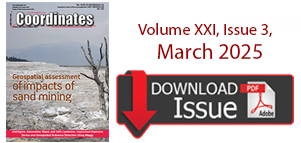| Galileo Update | |
Galileo Update
|
||||||||||
EGNOS + Galileo = safer skies
Europe’s two satellite navigation systems could combine in future for heightened performance, an airborne test has confirmed. A helicopter flight took place above an Alpine valley, the one place on Earth where Galileo services are already routinely available. Results of last autumn’s flight test show that adding Galileo signals to the European Geostationary Navigation Overlay Service – EGNOS – that currently augments the accuracy and reliability of US GPS signals over Europe should boost its accuracy significantly. Operational horizontal and vertical distance ‘protection levels’ for safety were cut by approximately half by combining use of GPS and Galileo within EGNOS. In addition, new integrity algorithms installed within the user receiver turned out to reliably detect and exclude reflected or otherwise faulty signals. The first test of real Galileo navigation fixes is scheduled for later this year from the four satellites already in orbit, with more satellites set to join them by the end of the year. As the constellation takes shape, satnav researchers and industrial developers can already try out Galileo services with prototype receivers at the giant outdoor laboratory that is the German Galileo Test and Development Environment, or GATE. www.esa.int/
Interim Report of the EU/US Cooperation on Satellite navigation released
The U.S.-EU Agreement on GPS-Galileo Cooperation signed in 2004 established the principles for the cooperation activities between the United States of America and the European Union in the field of satellite navigation. The Agreement foresaw a working group to promote cooperation on the design and development of the next generation of civil satellitebased navigation and timing systems. This work became the focus of Working Group C (WG-C). The subject Interim Report documents EU/U.S. accomplishments in developing the concept of ARAIM (Advanced Receiver Autonomous Integrity Monitoring) as a future basis for a multi-constellation support for global air navigation. The document captures the main findings of the studies conducted so far by joint teams on both sides of the Atlantic. The report was prepared collaboratively thanks to the contributions from EU and US institutions, specialized agencies, research institutes and universities The purpose of releasing this Interim Report is to inform the GNSS community about the progress made in this area thanks to the cooperative work of the U.S. and the EU, to call for comments on the findings, as well as to build a broad consensus towards the future standardization of ARAIM at international level. http://ec.europa.eu/











 (No Ratings Yet)
(No Ratings Yet)






Leave your response!